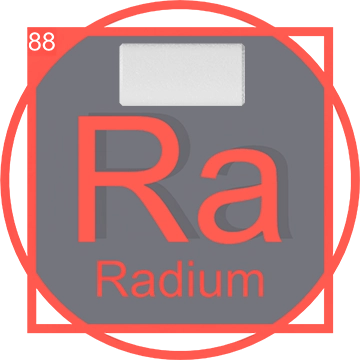Polonium (Po): A Radioactive Marvel in Science and Technology
Introduction to Polonium
Polonium, represented by the symbol Po and atomic number 84 in the periodic table, is a rare and highly radioactive metalloid. Known for its intense radioactivity, Polonium was discovered in 1898 by the pioneering scientist Marie Curie and named after her native country, Poland. This element is unique due to its scarcity in nature and its significant radioactivity, which has made it both a subject of intense scientific study and a tool in various technological applications.
The Discovery of Polonium

Polonium was first isolated by Marie Curie and her husband Pierre Curie while they were investigating the cause of pitchblende's radioactivity, which was higher than that of uranium alone. They deduced that such activity might be caused by the presence of a new element, which was indeed Polonium. This discovery was pivotal in the field of radioactivity, a term that Marie Curie herself coined.
Pure Polonium

Pure Polonium is a rare and highly radioactive metalloid known for its significant applications and hazards. This element exists in a few forms, but its most stable isotope, Polonium-210, has been the most studied due to its potent radioactivity and half-life conducive to laboratory research. Pure Polonium is a silvery-gray metal that, when unoxidized, can shine brightly. Due to its intense radioactivity, it generates heat and can reach temperatures high enough to vaporize itself in air. The element's rarity and the precautions necessary for its handling make it an element of both scientific curiosity and significant practical importance in applications like heat sources in space probes and antistatic devices.
Polonium in the Periodic Table
Located in Group 16 of the periodic table, Polonium is a part of the chalcogen group, sharing properties with oxygen, sulfur, selenium, and tellurium. This positioning explains its metallic and nonmetallic properties and hints at its complex chemical behavior. Polonium's placement in the periodic table is crucial for chemists studying the synthesis and reactions of radioactive compounds.
Scientific Significance of Polonium

Polonium's intense radioactivity has established it as a crucial element in the fields of nuclear science and radioactive research. Notably, Polonium is one of the few elements that can emit significant amounts of alpha particles. These alpha particles are heavily utilized in the realm of medical science, particularly in the innovative approach of targeted alpha therapies for cancer treatment. In these therapies, Polonium isotopes are employed to selectively destroy malignant tumor cells, thereby reducing the likelihood of damage to surrounding healthy tissues and minimizing side effects compared to traditional radiation therapies. Furthermore, its unique characteristics make Polonium an invaluable tool in studying nuclear reactions and mechanisms, enhancing our understanding of radioactive decay processes.
Technological Applications of Polonium

Despite its hazards, Polonium has several practical applications:
- Industrial Radiography: Polonium isotopes are used in industrial radiography to inspect metal parts and welds for defects without dismantling equipment.
- Heat Sources: In space missions, Polonium-210 has been used as a lightweight heat source to power thermoelectric cells in lunar and planetary rovers.
- Antistatic Devices: Due to its ionizing properties, Polonium is used in devices to eliminate static electricity in machinery and dust filters.
The Economic and Environmental Impact of Polonium
Handling Polonium is challenging and costly due to its high radioactivity, requiring stringent safety protocols. Its use is usually confined to closed systems to prevent environmental contamination. Economically, the demand for Polonium is limited to very specific industries where its unique properties can be safely harnessed.
How Polonium is Produced
Unlike many elements, Polonium is not mined directly from the earth due to its extreme rarity and high radioactivity. Instead, Polonium is typically produced in nuclear reactors by bombarding bismuth-209 with neutrons to yield bismuth-210, which then decays to Polonium-210. This production method highlights the synthetic nature of Polonium’s accessibility.
Polonium Mining and Associated Elements
Since Polonium is not mined, there are no specific mines for Polonium. However, trace amounts of Polonium can be found in uranium ores, which are primarily mined in regions such as Canada, Australia, and Kazakhstan. In these uranium ores, Polonium coexists with other radioactive elements such as radium and uranium, which are processed in nuclear reactors for various uses.
Current Uses of Polonium

Today, Polonium is utilized for several specific applications:
- Heat Sources: Utilized as a compact heat source in space probes and other devices where its intense radioactivity provides significant heat output.
- Antistatic Devices: Due to its ability to neutralize air, it is used in brushes that remove dust from photographic films and camera lenses.
- Scientific Research: Polonium’s strong neutron activation properties make it useful in neutron sources for research purposes.
The Future of Polonium

The potential applications of Polonium continue to develop as scientific research delves deeper into nuclear technologies and radiation therapies. Future uses could include:
- Advanced Medical Therapies: Expanding its use in targeted radiation treatments for cancer, where its precision can drastically improve patient outcomes.
- Space Exploration: Further development of Polonium-based heat sources could enhance the longevity and reliability of instruments on long-duration space missions.
- Environmental Applications: Use of Polonium in environmental sensors to monitor pollution levels with high sensitivity due to its radioactive properties.
In conclusion, while handling and usage of Polonium must be carefully controlled due to its radioactivity, its potential in high-value applications continues to make it an element of significant interest across various scientific and technological fields.












